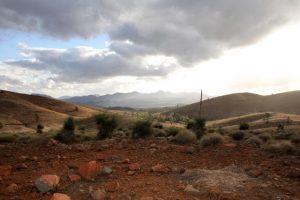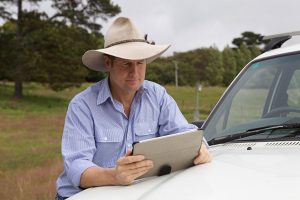Editor: Dr Ruth Armstrong. Author: Gordon Gregory on August 17, 2016. In Croakey longreads.
In his post last week at Croakey, Gordon Gregory flagged the tremendous opportunities open to the Hon Dr David Gillespie, MP, in his new role as Assistant Minister for Rural Health – an area in which leadership and support is sorely needed.
In a longer article below Gregory, who recently retired after 23 years of heading up the NRHA, expands on this concept with an even dozen agenda items for the Minister, including a helpful guide to his key collaborators for success: his fellow ministers, along with those work and live in rural Australia.
 Gordon Gregory writes:
Gordon Gregory writes:
In an earlier article, I discussed the potential roles of the new Assistant Minister for Rural Health, Dr David Gillespie, in expanding the Rural Generalist Pathway and developing the role of the Commissioner for Rural Health.
But if his work in this portfolio is to improve significantly the health of rural and remote-living Australians, the Minister’s agenda needs to be much fuller. Here I outline twelve further items for consideration.
1. The Minister for Rural Health should lead a whole-of-government approach to rural health
As a health practitioner from a non-metropolitan region, David Gillespie is well qualified to understand the realities of health and health services in rural and remote areas.
He will have been a close observer of the well-known health service deficits borne by rural people, including the relatively poor access to health professionals, particularly those in more specialised disciplines. He will also be aware of the logistical and financial access difficulties that long distances create for consumers.
He will understand the increased prevalence of health risk factors in rural areas, such as smoking, excessive drinking, food insecurity and insufficient physical activity.
Other predisposing factors relating to poorer health will also be well-known to Dr Gillespie: the overall situation in which rural people have lower incomes, fewer years of completed education, and higher rates of deprivation, including unemployment, disability and poverty.
Alongside this, the Minister will be aware of the advantages of rural life, such as an often enhanced sense of community, which provides the basis for teamwork and collaboration between and among health and other professionals. These less tangible benefits of rural life are evidenced in reports of greater overall ‘happiness’ revealed by rural people in surveys on the issue. (See, for example, the University of Melbourne’s Household, Income and Labour Dynamics Survey (HILDA), 2015.)
The purpose of my very brief reiteration of what might be called ‘the rural syndrome’ is to emphasise the potential value of Dr Gillespie working with and through his Ministerial colleagues to secure a more-joined-up approach to rural health challenges. Some of the best investments in improved rural health would come from close and ongoing liaison – and collaborative action – between portfolios responsible for all of the social determinants.
This collaborative action would see the Minister for Rural Health working closely with colleagues in several other portfolios: Nigel Scullion (Minister for Indigenous Affairs); Michaelia Cash (in her capacity as Minister for Women); Fiona Nash (now Minister for Regional Development and Regional Communications); his portfolio colleague Ken Wyatt (Assistant Minister for Health and Aged Care); Jane Prentice (relating to disability services); Zed Seselja (multicultural affairs); and Karen Andrews (in relation to her responsibility for vocational education and skills).
 Building bridges for a joined-up approach
Building bridges for a joined-up approach
2. The health of Aboriginal and Torres Strait Islander peoples
Everyone understands that Closing the Gap in health status and life expectancy between Aboriginal and Torres Strait Islander people and non-Indigenous Australians requires improvements in the social and cultural determinants of health and wellbeing – which lie outside the health sector.
So perhaps the greatest contribution David Gillespie can make to improved Indigenous health in rural and remote areas will come from collaborating closely with Indigenous Affairs Minister, Nigel Scullion, to ensure that the information on issues relating to Aboriginal and Torres Strait Islander health provided to both Ministers, and to Cabinet, comprehends the need for different approaches to Indigenous people’s wellbeing in city, regional, rural and remote areas.
Where Indigenous health is concerned, as with so much else, there are different priorities and circumstances in different settings. Once public servants in their respective agencies see their Ministers in close collaboration, day-to-day cooperation at agency level will more readily follow.
Dr Gillespie will need his senior Minister’s support for such inter-departmental work – support which Health Minister Sussan Ley, given her close understanding of rural areas, will presumably provide.
An example of a proposal on which Ministers Gillespie and Scullion could act is eye health among Aboriginal and Torres Strait Islander people. Over 90 per cent of vision loss in Aboriginal communities is preventable or treatable, and a federally funded subsidised spectacle scheme for rural and remote areas (including for their Aboriginal and Torres Strait Islander people) would have positive social and economic returns.
3. Action is needed on rural mental health – and the report from the Mental Health Commission has described some of the best bets.
Given the high burden of mental illness (including suicide) in rural and remote areas and the shortage of specialised mental health workers, greater flexibility is needed in existing funding streams, enabling localised solutions for local needs and contexts.
In its report, the Mental Health Commission proposed the establishment of 12 regions across Australia as the first step in the introduction of comprehensive, whole-of-community approaches to suicide prevention.
It is very welcome that the first two of these trial sites are in North Queensland and WA’s Kimberley region, recognising the over-representation of suicide rates in remote and Indigenous communities such as the Kimberley, where the age-adjusted rate of suicide is more than six times the national average.
The North Queensland site is to give special attention to defence force personnel. If other sites are to have a specific population focus, one to be considered might be child and adolescent mental health. The shortage of specialists means that screening and early intervention for mental health conditions among children in rural areas often does not happen.
A whole-of-government approach to child and adolescent mental health will help to ensure that the evolving National Disability Insurance Scheme deals appropriately with children with complex psychosocial needs.
4. Supporting the work of Primary Health Networks (PHNs) that include large rural and remote areas
To be effective, PHNs with rural and remote populations and large geographic areas have to work differently from their metropolitan counterparts. They face a number of extra challenges but, on the positive side, they can demonstrate the practicability and effectiveness of working collaboratively across disability and aged care services, acute and primary care, preventive health, education and Indigenous affairs.
Another positive thing for rural and remote PHNs is that non-traditional organisational partnerships and innovative measures like funds pooling are more likely to be permitted and workable than in urban contexts.
The relationship between PHNs in rural areas, and hospitals, Multi-Purpose Services and Aboriginal Community Controlled Health Services can reflect the natural ‘closeness’ or visibility of agencies in rural communities and the fact that many of the same professionals are involved across multiple settings.
The work that Dr Gillespie can lead could help demonstrate the value of PHNs as the new architecture for co-ordinated primary care.

5. Optimising the benefits for rural people of ‘Consumer Directed Care’ in the aged and disability sectors
Both the aged care and the disability care sectors are emerging from transformations driven by the principles of Consumer Directed Care (CDC). Some developments have not been clear to all parties, resulting in uncertainty on the ground, especially in areas where information is less readily available.
This time of considerable flux provides an opportunity to ensure that policies and programs for aged and disability care are joined up – as they need to be in rural areas – rather than separate entities, and that close practical relationships are also developed with the National Disability Insurance Scheme (NDIS).
Collaboration in workforce recruitment, retention and support has the capacity to increase the number of funded positions for health staff. This can increase the availability of allied health professionals, essential contributors to the NDIS.
6. Rural and remote health research
Many people in the rural and remote health sector believe that research in their areas of interest receives nothing like its fair share. For example, Lesley Barclay and others have calculated that research undertaken on rural health and by people in rural areas accounts for less than 5 per cent of the total funded by NHMRC.
This raises the issue of the relative effectiveness of good research of a national nature which includes consideration of rural and remote issues, as distinct from good research on rural and remote issues, undertaken by rural people, and undertaken in rural and remote areas.
As Minister for Rural Health, David Gillespie will have a natural interest in the means by which evidence relating to rural and remote health becomes available. The national context for this is quite alarming. Funding for research on several fronts has suffered. The timing of these cuts could not be worse, as the greatest need for evidence arises when new money is scarce, and choices have to be made about which service systems and approaches work best.
Without data, it is impossible to evaluate progress towards targets or know the effectiveness of various programs. The national data agencies do valuable work and undertake a pleasing amount of analysis comparing results by remoteness. This is a resource which the Minister needs to protect. (The Minister is providing the opening address to the 5th Rural and Remote Health Scientific Symposium in Canberra, 6-7 September 2016.)
7. Connectivity in hard-to-service areas – and its importance for health services
Given their National Party affiliations, there will be a particularly close working relationship between Fiona Nash in her role as Regional Communications Minister and David Gillespie as Rural Health Minister. This could potentially be valuable for people living in rural and remote areas, as fast, reliable and affordable digital access is an urgent and essential priority for business, schooling, professional training and recreational purposes – as well as for services such as telehealth.
It is to be hoped that the Turnbull Government will map out a remote digital inclusion framework and telecommunications strategy to ensure that remote and rural Australians can effectively participate in the global digital economy. For too long, various national telecommunications infrastructure initiatives have focused on the 95 per cent of the population who are, at least in a technical sense, relatively easy to service.

Minister Gillespie will ideally be involved with Fiona Nash’s work on regional communications, not merely as an observer but as someone whose portfolio interests will inform progress. Dr Gillespie should commission the Department of Health to undertake a review of how telehealth programs can be extended and improved.
8. Food (in)security
The National Rural Health Alliance (NRHA) has recently completed a study of food security, funded by the Rural Industries Research and Development Corporation (RIRDC) (publication forthcoming through RIRDC and the NRHA). It is alarming to know that in a nation as wealthy as Australia, and one which is a net exporter of food, there are people who experience food security from time to time and some, indeed, who regularly cannot access the food they need for a healthy diet.
It is to be hoped that Dr Gillespie will consider acting on the major proposal in the forthcoming RIRDC/NRHA report. This is that coordinated action to address food security nationally should begin with the development of a National Food Security Strategy. It would consider every aspect of food production, distribution, pricing, storage and preparation – all of which pose particular challenges in more remote areas.
9. The rural and remote health workforce
A significant proportion of the resources of the Department of Health is devoted to health workforce issues. The gold medal in these considerations goes to the medical workforce, with nursing interests winning silver and allied health bronze.
There can be no argument with the proposition that the Australian Department of Health has a particular interest in and responsibility for medical matters. However, as Dr Gillespie will understand, providing effective rural health care depends on all members of the health professional team. As Minister for Rural Health he can play a leading role in ensuring that nursing, dental and allied health interests are appropriately considered in the Department’s work.
One specific matter for his early attention should be the question of rural and remote health scholarships. The Government decided some time ago to recast these. It is critical that these scholarships remain in place, whatever changes are effected to their management or administration.
The role of the Rural Health Commissioner, discussed in an earlier piece for Croakey, will be a critical adjunct to the Minister’s leadership on broad-based health workforce issues.
10. Medicare and more remote areas
The recent election campaign provided compelling evidence of the central role played in Australia’s health system by Medicare. It has such immense political cachet that no one seems to be brave enough to remind governments that, however good it is, Medicare is only useful to those people who can and do visit a doctor. Dr Gillespie might commission his Department to update the size of the rural Medicare deficit, estimated to be $2.1 billion in 2006-07.
Despite the fact that, in aggregate, Australia is almost certainly over-doctored, there are still some people who cannot access a doctor, either through geography or financial means. Dr Gillespie will probably be astonished (but nevertheless convinced!) that data from different sources on just how much ‘doctoring’ is done in rural and remote areas are so varied that the actual situation is still not clear.
It is also to be hoped that the Medicare Benefits Schedule (MBS) Review Taskforce has come up with some good ideas for their Ministers to consider about how access to Medicare funded services in rural and remote areas can be expanded.
11. Child health
The Caring for Country Kids Conference was held in Alice Springs in April 2016. Given the appalling treatment of certain young people in the Northern Territory that has become clearly known since then, one of the outcomes from that Conference now assumes quite a different character.
The organisations that convened the Conference, the NRHA and Children’s Healthcare Australasia (CHA), agreed “to progress both individually and jointly with the aim of raising the profile of child health care in Australia and dramatically improving our national capacity to understand what needs to be done and to act on it”.
A series of recommendations was generated from the Caring for Country Kids conference which, between them, could become the centrepieces of a strategic plan for child health in Australia. They include the formation of a coalition of child and youth health and wellbeing expert bodies to drive national investment in the early years as the most evidence-based way of improving child, youth and wider community health.
Other important elements of such a strategic plan should include a focus on child and adolescent mental health within the National Mental Health Plan; and a platform to bring together data collected in different agencies to analyse and report on child and youth health and wellbeing, including issues relating to family violence, self-harm and suicide.
12. Support from the National Rural Health Alliance

Across this broad agenda Dr Gillespie can call on support and advice from the National Rural Health Alliance (NRHA). The NRHA’s ongoing challenge is to be active in all these areas, giving it the unique capacity to represent the complexity, the inter-relationships, and the social and economic determinants which are the reality of rural and remote health and wellbeing.
There are many different voices in Australia’s rural and remote health sector and the NRHA’s purpose is to bring them together in order to strengthen the general case for governments to prioritise improvements in rural and remote health and health services.
Working on such a broad agenda is always difficult and it is sometimes tempting – oh for a simple life! – for the NRHA to focus on a small number of issues at the expense of the whole. This is a temptation the NRHA must resist.
The detailed research and evidence can be provided by its member bodies (currently numbering 38) or by mainstream rural research bodies. But the NRHA is the only body charged with the task of representing the shared interests of all those professions and other organisations that serve the people of rural and remote Australia.
An industrious approach to this work will see detailed understandings from research undertaken by its member bodies on issues of importance to them, being combined with the breadth of understanding of the whole organisation – and especially its consumers. This will enable the NRHA to support David Gillespie effectively in what is intrinsically challenging work.
*Gordon Gregory is the recently retired CEO of the National Rural Health Alliance. Follow him on twitter @gnfg.
